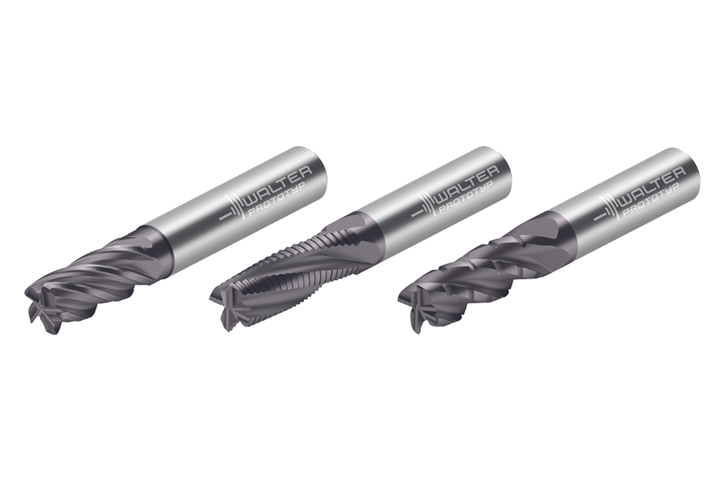Inch-Size Solid Carbide Shoulder/Slot Mills
Walter USA brings an expansion to its solid carbide milling offering for roughing, finishing and milling with new tools for universal application.
Left to right: MA230, MA320 and MA321 Advance solid carbide milling cutters for universal machining. Photo Credit: Walter USA
With more than 3,000 new cutting tools in inch sizes, Walter USA continues to expand its solid carbide milling offerings, which now include the MA230, MA320 and MA321 Advance shoulder/slot mills for universal application.
The MA230 Advance solid carbide milling cutter is for universal machining of steel, stainless steel, cast iron and high-temperature superalloys (ISO P, M, K and S workpiece groups) at the highest level. The tool’s exclusive edge prep enables stable and efficient cutting action. An eccentric relief provides a strong cutting edge, and a proprietary coating allows for a higher cutting speed and extended tool life.
The MA230 Advance cutter is for high-performance roughing and finishing and enables reliable milling with a very high metal removal rate. Most sizes are available with either a standard or reduced neck. The diameter range is from 0.031 to 1.0". These tools are available in three-, four-, five-, seven- and nine-flute versions. For example, the seven-flute mill offers extreme metal removal rates delivered at full flute length and a 15% radial engagement for high-feed machining processes. The nine-flute mill is said to be excellent for finishing tight tolerance walls.
The MA321/MA320 Advance solid carbide milling cutters were also developed for machining ISO P, M, K and S workpieces. The multiple-use tools are designed for roughing and semi-finishing in a single pass. The sinusoidal ground profile ensures optimal chip evacuation, optimal heat resistance and minimum tool wear. The tools are ideally suited for milling ferrous materials with a medium hardness and appropriate for use when heavy cutting while still providing fine surface finishes. The diameter range is from 3/16 to 1.0". The tools are available with a cylindrical shank in four- and five-flute versions.
RELATED CONTENT
-
Graphite vs. Copper Electrode Material for EDM Applications, Part 1
If you’ve been torn in the long-standing, unresolved debate over whether graphite or copper is a better EDM electrode material, here are some considerations identifying differences in cost, detail and performance to help you select the appropriate material for EDM applications.
-
Texturing Molds for Thermoplastics: Factors for Success
Factors to consider when selecting a texture or grain for a thermoplastic mold or die.
-
Advantages and Disadvantages of Copper and Graphite Electrodes
Both copper and graphite provide approximately the same end result, so it is important for a shop to consider the advantages and disadvantages of each material in order to discover what would work best in their shop floor environment.











